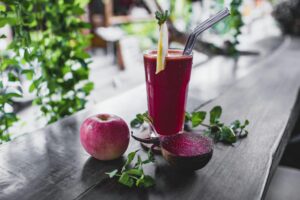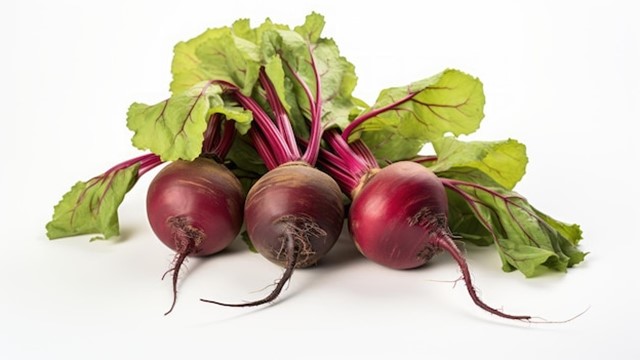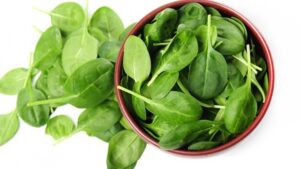Introduction:
In the realm of culinary delights, few ingredients can rival the vibrant allure of beetroot. With its striking magenta hue and earthy flavor, beetroot has captured the hearts and palates of food enthusiasts around the globe. But beyond its aesthetic appeal lies a treasure trove of health benefits and culinary possibilities waiting to be explored. Join us as we embark on a journey to uncover the beauty and benefits of beetroot.
Welcome to a colorful journey through the world of beetroot cuisine, where the earthy sweetness of this humble root vegetable takes center stage in a variety of culinary creations. From its striking magenta hue to its nutrient-rich profile, beetroot has captured the hearts and palates of food enthusiasts worldwide.
In this exploration, we uncover the versatility of beetroot, from its traditional use in salads and soups to its innovative presence in desserts, smoothies, and even savory dishes. Discover how chefs and home cooks alike harness the vibrant flavors and nutritional benefits of beetroot to elevate their culinary creations.
Join us as we delve into the rich history and cultural significance of beetroot across different cuisines and regions. From borscht in Eastern Europe to beetroot curry in India, each dish tells a unique story of tradition, creativity, and local ingredients.
Whether you’re a seasoned beetroot enthusiast or a curious newcomer to its culinary potential, this journey promises to tantalize your taste buds and inspire you to embrace the vibrant delights of beetroot cuisine. Get ready to fall in love with the versatility, flavor, and beauty of this extraordinary vegetable.

Health Benefits:
Beetroot is not only prized for its vibrant color and earthy flavor but also for its numerous health benefits. Here are some of the ways beetroot can contribute to your well-being:
Heart Health
: Beetroot is rich in nitrates, compounds that have been shown to help lower blood pressure by dilating blood vessels and improving blood flow. Consuming beetroot regularly may help reduce the risk of heart disease and improve overall cardiovascular health.Improved Athletic Performance
: The nitrates found in beetroot have also been linked to improved athletic performance. Studies suggest that athletes who consume beetroot juice before exercise may experience enhanced endurance, as the nitrates help increase oxygen delivery to muscles, reducing fatigue and improving stamina.Antioxidant Properties
: Beetroot is a rich source of antioxidants, including vitamin C, betalains, and other phytonutrients. These compounds help protect cells from oxidative damage caused by free radicals, reducing inflammation and lowering the risk of chronic diseases such as cancer and diabetes.Digestive Health
: Beetroot is high in dietary fiber, which is essential for maintaining a healthy digestive system. Fiber promotes regular bowel movements, prevents constipation, and supports gut health by nourishing beneficial gut bacteria. Including beetroot in your diet can help keep your digestive system functioning smoothly.Detoxification
: The betalains found in beetroot have been shown to support liver function and promote detoxification. These compounds help the liver efficiently remove toxins from the body, supporting overall detoxification pathways and aiding in the elimination of waste products.Brain Health
: Some research suggests that the nitrates in beetroot may have cognitive benefits, improving blood flow to the brain and enhancing cognitive function. Consuming beetroot regularly may help maintain brain health and reduce the risk of age-related cognitive decline.
Incorporating beetroot into your diet in various forms, such as raw, cooked, juiced, or pickled, can provide a wide range of health benefits. Whether you enjoy it in salads, soups, smoothies, or as a colorful side dish, beetroot is a nutritious addition to any meal that can help support your overall health and well-being.
Exploring the Origins:
Exploring the Origins: Unveiling the Rich History of Beetroot
The story of beetroot’s origins is as colorful and intriguing as the vegetable itself. Dating back thousands of years, beetroot has traversed continents and cultures, leaving an indelible mark on culinary traditions around the world.
Origins in the Ancient Mediterranean:
The journey of beetroot begins in the ancient Mediterranean region, where it was cultivated for both culinary and medicinal purposes. Historical records suggest that beetroot was first domesticated in the fertile lands of ancient Egypt, where it was prized for its edible roots and leaves. The ancient Greeks and Romans also revered beetroot for its medicinal properties, using it to treat ailments ranging from fevers to digestive issues.
Spread Across Europe:
As trade routes expanded and civilizations flourished, beetroot found its way across Europe, where it became a staple ingredient in the diets of ancient societies. In medieval times, beetroot was widely cultivated and consumed throughout Europe, particularly in regions like France, Germany, and Italy. It was during this period that beetroot began to gain popularity as a culinary ingredient, appearing in soups, stews, and pickled preparations.
Renaissance and Beyond:
During the Renaissance era, beetroot experienced a resurgence in popularity, thanks in part to its vibrant color and sweet flavor. European nobility prized beetroot for its culinary versatility and aesthetic appeal, incorporating it into elaborate feasts and banquets. In Russia, beetroot became the star ingredient of borscht, a hearty soup that remains a beloved dish to this day.
Global Expansion:
With the age of exploration came the global expansion of beetroot, as European explorers introduced the vegetable to new lands and cultures. Beetroot found its way to the Americas, Africa, and Asia, where it was embraced by indigenous communities and integrated into local cuisines. Today, beetroot continues to be cultivated and enjoyed around the world, with each region putting its own unique spin on this versatile vegetable.
Cultural Significance:
Beyond its culinary uses, beetroot holds cultural significance in many societies. In Eastern Europe, for example, beetroot is associated with prosperity and good luck, and it plays a central role in traditional celebrations and rituals. In India, beetroot is used in religious ceremonies and festivals, symbolizing fertility and abundance.
In conclusion, the origins of beetroot are as diverse and fascinating as the cultures that have embraced it over the centuries. From ancient Egypt to modern-day kitchens, beetroot has stood the test of time, captivating palates and inspiring culinary creativity wherever it goes. As we continue to explore the rich history of beetroot, we gain a deeper appreciation for this humble vegetable and the role it plays in shaping our global food culture.
Culinary Delights:
Culinary Delights: Exploring the Versatility of Beetroot in the Kitchen”
Beetroot, with its vibrant color and earthy sweetness, is not only a nutritional powerhouse but also a culinary delight that adds depth and complexity to a wide range of dishes. From savory salads to decadent desserts, beetroot’s versatility knows no bounds, offering endless possibilities for creative culinary exploration.
Salads and Appetizers
: Beetroot shines as the star ingredient in fresh salads and appetizers, where its natural sweetness and vibrant color can take center stage. Try pairing roasted beetroot with creamy goat cheese, crunchy walnuts, and tangy balsamic vinaigrette for a simple yet elegant salad. Or, for a refreshing appetizer, serve beetroot carpaccio thinly sliced and drizzled with olive oil and citrus zest.Soups and Stews
: In hearty soups and stews, beetroot adds depth and richness to the broth while infusing it with its distinctive earthy flavor. Borscht, a classic Eastern European soup made with beetroot, cabbage, and potatoes, is a comforting and nourishing dish that warms the soul on cold winter days. For a modern twist, try adding grated beetroot to a vegetable or lentil soup for a pop of color and flavor.Main Courses: Beetroot can also take center stage in main courses, where it can be roasted, grilled, or sautéed to perfection. Beetroot burgers, made with grated beetroot, beans, and spices, offer a tasty and nutritious alternative to traditional meat burgers. For a sophisticated dinner party dish, try serving beetroot risotto, where roasted beetroot is folded into creamy Arborio rice for a dish that’s as visually stunning as it is delicious.
Side Dishes
: Beetroot makes a delightful addition to side dishes, where it can be roasted, pickled, or grated raw for added texture and flavor. Roasted beetroot wedges, seasoned with olive oil, garlic, and fresh herbs, make a delicious accompaniment to roasted meats and grilled fish. Pickled beetroot, with its tangy-sweet flavor and vibrant color, adds brightness and acidity to sandwiches, salads, and cheese boards.Baking and Desserts
: Beetroot’s natural sweetness and moisture make it a wonderful addition to baked goods and desserts. Beetroot chocolate cake, made with pureed beetroot, cocoa powder, and dark chocolate, is a decadent treat that’s rich and indulgent without being overly sweet. For a lighter option, try baking beetroot muffins or scones, where grated beetroot adds moisture and a subtle earthy flavor.Beverages
: Beetroot can also be incorporated into beverages, where it adds color, flavor, and nutritional value. Beetroot juice, either on its own or combined with other fruits and vegetables, is a refreshing and energizing drink that’s packed with vitamins and antioxidants. Beetroot smoothies, blended with bananas, berries, and leafy greens, offer a delicious and nutritious way to start the day.
In conclusion, beetroot’s versatility in the kitchen is truly remarkable, offering endless opportunities for culinary creativity and exploration. Whether enjoyed raw, roasted, or blended into soups, salads, main courses, or desserts, beetroot’s unique flavor and vibrant color are sure to delight the senses and inspire the palate. So why not embrace the culinary delights of beetroot and elevate your cooking to new heights?
Roasted Beetroot with Balsamic Glaze Recipe
Ingredients:
- 4 medium-sized beetroots, washed and trimmed
- 2 tablespoons olive oil
- Salt and pepper, to taste
- 2 tablespoons balsamic vinegar
- 1 tablespoon honey or maple syrup (optional, for sweetness)
- Fresh thyme leaves (optional, for garnish)
Instructions:
- Preheat the Oven: Preheat your oven to 400°F (200°C) and line a baking sheet with parchment paper or aluminum foil.
- Prepare the Beetroots: Peel the beetroots using a vegetable peeler, then slice them into quarters or bite-sized chunks, depending on your preference.
- Season and Roast: Place the beetroot pieces on the prepared baking sheet. Drizzle with olive oil and season with salt and pepper, tossing to coat evenly. Spread the beetroot pieces out in a single layer to ensure even roasting.
- Roast in the Oven: Roast the beetroot in the preheated oven for 25-30 minutes, or until tender and caramelized around the edges. Check for doneness by inserting a fork into the beetroot; it should pierce through easily.
- Prepare the Balsamic Glaze: While the beetroot is roasting, prepare the balsamic glaze. In a small saucepan, combine the balsamic vinegar and honey or maple syrup (if using) over medium heat. Bring the mixture to a gentle simmer, then reduce the heat to low and cook for 5-7 minutes, or until the glaze has thickened slightly.
- Serve: Once the beetroot is roasted to perfection, remove it from the oven and transfer it to a serving dish. Drizzle the balsamic glaze over the roasted beetroot, using a spoon to coat evenly. Garnish with fresh thyme leaves, if desired.
- Enjoy: Serve the roasted beetroot with balsamic glaze as a delicious side dish or appetizer. It pairs beautifully with roasted meats, grilled fish, or as part of a vibrant vegetarian meal. Enjoy the earthy sweetness and caramelized flavors of this delightful dish!
This roasted beetroot recipe with balsamic glaze is simple to make yet bursting with flavor. Whether served as a side dish or the star of the meal, it’s sure to impress with its vibrant colors and delicious taste.




